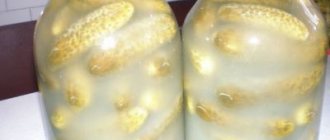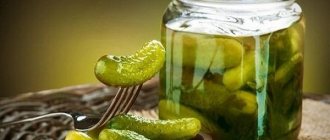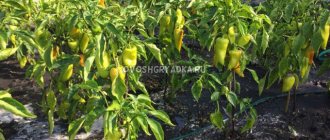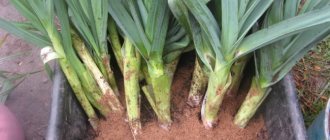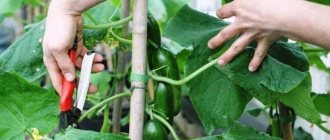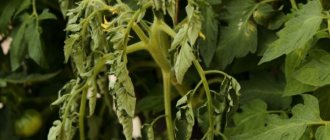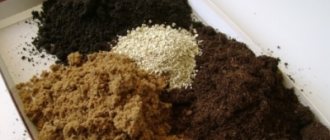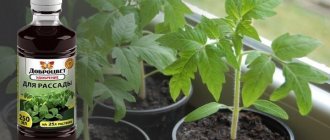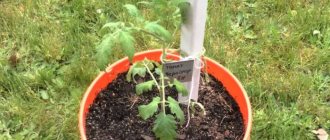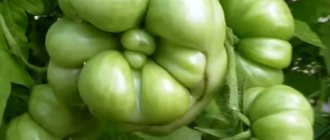Black leg on tomato seedlings, the reasons, how to get rid of it, how to treat the seedlings will be described in detail in this article.
Black leg most often affects seedlings of tomatoes, eggplants, cucumbers, bell peppers, radishes, some types of cabbage and even flowers. It is very important to know what to do to prevent seedlings from being damaged by blackleg, since this disease has practically no cure and can destroy most of the seedlings. Next, we will describe in detail what blackleg disease is, how to fight it, and describe the most effective methods of control and prevention.
Signs of infection
The main signs of tomato disease are:
- The stem stretches and thins as a result of disruption of the basic development processes caused by pathogenic microflora.
- The tissues of the root collar and stem change color. First, brown spots appear, they are soft and wet, and eventually turn black. The diameter of the stem becomes smaller as a result of tissue deformation.
- At the bottom of the stem, blackleg can spread to both the upper part of the plant and the root system. Often the gardener may not notice this lesion. Infection is detected only during picking, when the seedling is dug up.
- The leaves of the seedlings curl at the ends and dry out as a result of damage to the leaf blade due to a lack of nutrients in the soil.
- You can most often suspect that seedlings are damaged by blackleg if thin seedlings begin to lean down or break off at the root.
Black leg: description of the disease
Various pathogenic fungi, such as Olpidium or Pythium, always live in the surface layers of the soil, which feed on dead and decaying plant debris. They are the cause of a common fungal disease of tomato seedlings, nicknamed blackleg. When certain favorable conditions are created (high humidity, poor lighting, thickened crops, too acidic soil, excessive watering, non-compliance with temperature conditions, etc.), spores located at a depth of up to 2 cm are immediately activated and then it is difficult to stop them.
Blackleg affects the stem just above the root collar
The disease affects the part of the stem located immediately above the root collar, where the mycelium of the fungus grows. This area first darkens, then thins and becomes unable to support the weight of the above-ground part of the plant. The seedlings simply fall down as if decimated. The disease develops so quickly that the leaves, of which there are usually no more than 2-3 pairs at this moment, do not even have time to wither. The mycelium grows rapidly, affecting all neighboring seedlings. Because of this, you can lose all your tomato seedlings at once.
Seedlings affected by blackleg fall as if decimated
According to many vegetable growers, even specimens that miraculously survived the black leg then grow poorly and are not distinguished by abundant fruiting.
Causes of blackleg infection
Blackleg appears and actively develops for many reasons, which will be described below:
- Sowing seeds in blackleg-infected soil.
- Thickened plantings, as a result of which moisture is retained at the base of the seedlings. Together with high air temperatures, this leads to the development of the disease.
- Waterlogging of the soil, as a result of which moisture does not evaporate, but stagnates.
- Poor ventilation and ventilation.
- A sharp change in temperature by 5 degrees or more. Most often observed when the room is over-ventilated.
Watch the video! What does the black stem of a tomato look like?
How does it develop and why is it dangerous?
The causative agents of the disease are found in the soil. As soon as conditions suitable for them appear, they immediately settle on seedlings. Saprophytic molds feed on organic debris. In greenhouses or seedling cups, where space is limited, nutrient deficiencies occur. Therefore, pathogens attack plant roots through mechanical injuries during picking.
Bacterial origin is particularly contagious. The infection passes from diseased plants to healthy ones with air currents, when leaves come into contact, through insects or improvised means.
The main symptom of the bacterial form of the disease is the mucus that is found in the damaged stem. Inaction leads to the death of adult plants and loss of yield.
Features of the lesion
The process of identifying the pathogen is complicated by the fact that fungi and bacteria that infect tomato seedlings have similar characteristics. For these reasons, the effect of treatment may be zero.
- Fungal blackleg is controlled with fungicides.
- The bacterial variety of the disease is almost impossible to cure.
Important! Tomatoes are affected by saprophyte fungi, which are found in the top layer of soil.
They feed on plant debris. If plant residues become scarce, saprophytes begin to eat living organic matter, among which they prefer the softest tissues. That is, seedlings and young leaves.
Bacterial rot affects not only the lower part of the stem, but also the leaves and buds. The infection is transmitted from seedling to seedling, especially in dense plantings. It most often develops in high humidity and poor air circulation.
Fungal and bacterial diseases differ in the nature of the discharge. Transparent mucus at the site of damage to the stem indicates a bacterial type of disease.
The fungus spreads slowly and there is no significant lesion on the plant. The stem may turn gray or dark green rather than black. First of all, the fungus attacks the root system.
Problems encountered with tomato seedlings
For open ground, tomato seeds for seedlings begin to be planted in late March - early April. For full development, seedlings require a certain regime of daylight, temperature and humidity. In a city apartment it is difficult to comply with these requirements. Signs of stunted growth and disease appear.
Causes of black leg in tomatoes
Inexperienced gardeners may mistake the initial stage of blackleg disease for insufficient watering. The immature seedlings are leaning. It seems that the sprout has withered. The natural desire to water the tomatoes will only worsen the situation.
If you look closely, the root part of the stem is covered with microscopic dark dots. This is what the colonies of fungi that have infected your seedlings look like. Young plants affected by fungi, as a rule, do not survive - very young seedlings without true leaves simply fall and die.
On slightly older seedlings, with 2-3 pairs of true leaves, characteristic “constrictions” form in the root zone, which disrupt the natural flow of plant juices.
If the plant can be saved, it will grow weakened and one cannot count on a harvest.
The disease can also affect seedlings of peppers, cucumbers and cabbage.
Blackening of the stem of tomato seedlings due to fungal infection
Why leaves may turn yellow
Pale coloring of the leaf blades of seedlings and their further yellowing is a common phenomenon when growing seedlings. In a city apartment, it is difficult to create the necessary microclimate for healthy growth of tomatoes. Leaves may turn yellow and dry out for various reasons.
- The soil mixture for growing seedlings from seeds is not prepared correctly. The soil is unsuitably acidic or alkaline.
- Violation of the watering regime - insufficient or excessive with stagnation of water.
- The room temperature is too high for seedlings and the air is too dry.
- Lack of sunlight.
- Incorrect feeding regime.
A change in the natural color of seedlings lets you know about problems. Chlorosis, the so-called lack of chlorophyll in a plant, most often occurs due to the fault of gardeners.
The window sill of a city apartment is not the most comfortable place for seedlings. Dry warm air rises from the heating radiator and dries the soil in the seedling box. With the best of intentions, when the soil dries out, abundant watering is carried out at the root, which provokes diseases of tomato seedlings.
Another problem with a window sill is insufficient lighting. A full light regime for seedlings requires at least 10 hours of sunlight. Even a south-facing window cannot provide the normal amount of sunlight in March-April.
Yellowing of leaves due to chlorosis
The manifestation of chlorosis is the first sign of a malnutrition of a young plant. In addition to the lack of sun, seedlings are sensitive to a deficiency of micro- and macroelements. Nitrogen, potassium and zinc are of particular importance for the health of seedlings.
Why leaves may curl and curl
The leaves of such tomato seedlings may not only turn yellow, but also curl into a boat and subsequently dry out. And again, the reason why the leaves may curl should be sought in improper watering and low indoor humidity. Leaves curl when there is an imbalance of humidity and temperature. In fact, the plant is starving.
Starting from 35 degrees in the tomato plant, the processes of breakdown of nutrients from the body’s reserves predominate. At the same time, the absorption and accumulation of sugars slows down. This is a critical temperature for an adult bush; young seedlings simply will not survive.
In addition to banal starvation, the seedlings could be affected by bacterial cancer (bacteriosis). Its signs are that the leaves curl down, wither, turn brown and dry out. Sores and cracks are visible on the stems and petioles, and on the cut of the stem there is a brown ring of affected capillaries.
| Microelement | External manifestation of fasting |
| Phosphorus (deficiency) | The veins become purple, the top of the tomato leaf takes on a gray tint |
| Zinc (excess) | Old leaves curl down |
| Lack of copper, boron, zinc | Only young leaves curl |
| Low potassium | Leaves curl, turn pale, become smaller and die - necrosis develops |
Leaf curling occurs as a result of a lack of minerals or due to disease.
How to fight
It is very difficult to cure blackleg in tomato seedlings, so it is important to take preventive measures to prevent seedlings from becoming infected.
What to process
If a disease is detected in time and all measures to combat it are taken, the greater the chance of saving part of the crop. Blackleg is treated with the following means:
- Fitosporin . Produced in paste or powder form. Refers to natural biological products created on the basis of beneficial bacteria that absorb fungal spores. The drug is applied to the soil to disinfect it. You can also treat seeds with phytosporin before planting and use it to spray plants.
- Copper sulfate solution. To spray plants, dilute 0.2 g of product in 1 liter of water.
- Bordeaux mixture . To treat plants, dilute 10 g of the drug in 10 liters of water.
If a small area of the stem is affected, colloidal sulfur, copper sulfate or potassium permanganate will help get rid of the black leg.
Important! These products can cause burns to plant tissue, so they must be used with extreme caution in high concentrations.
Traditional methods
To treat tomato seedlings from blackleg, you can also use traditional methods:
- Copper sulfate and ash. Mix 1 teaspoon of vitriol and 200 g of ash. This mixture is sprinkled on the top layer of soil around the trunk.
- Onion peel. Onion peels contain phytoncides that fight fungi and stimulate plant growth. You need to pour 500 g of husk into 2.5 liters of warm water, cover the infusion and leave for 24 hours. Next, the solution is filtered and the seedlings and top layer of soil are sprayed with a spray bottle.
- Potassium permanganate. A pink solution of potassium permanganate is poured over the soil to disinfect it and the seedlings are sprayed.
Important! If the disease is bacterial in nature, then folk remedies have practically no effect. When infected with fungi, it is necessary to spray the seedlings 2-3 times.
Common mistakes
Some mistakes made by gardeners when trying to save seedlings have already been written above. But it makes sense to put everything together:
- If you water overwatered tomatoes with the best remedy for blackleg, it will not help, but will only accelerate the death of the seedlings. The treatment simply won't work. The tomatoes got sick precisely because the soil was wet. And when watered, will it become drier only because of the medicine dissolved in the water?
- For the same reason, you cannot spray a diseased nursery until the substrate dries. Drops of water flow to the surface, increasing the already excess humidity.
- Some gardeners manage to cut off the lower part and re-root the tomatoes, even if the seedlings have not developed real leaves. But this is a jewelry operation, with an unpredictable result. It is much easier to replant tomatoes - time still allows. From the tops rooted at such an early age, and even taken from dying seedlings, weak bushes will grow, unable to produce a normal harvest.
- Use of high doses of fungicides. If seedlings are spilled with a working solution in a concentration intended for an adult tomato, they will die.
- When using potassium permanganate, it is difficult to maintain the dosage. And each gardener understands what “pink solution” is in his own way. It is better to use potassium permanganate for spot disinfection of the substrate, and water the dried soil with some kind of biological preparation, otherwise the seedlings can be burned, and they are already weak.
Prevention
To prevent blackleg disease in tomato seedlings, it is necessary to take preventive measures:
- Soil disinfection. To grow seedlings in the fall, soil is taken from an area where tomatoes and nightshades did not grow. During the winter it is kept outside at sub-zero temperatures. In spring, the soil is calcined in the oven for 20-30 minutes at 180 degrees.
- Seeds are disinfected before planting . The seeds are tied in gauze and disinfected in a saturated solution of potassium permanganate for 30 minutes. Then they are washed directly in gauze under running clean water and dried.
- Monitor the acidity of the soil. Most often, blackleg develops in soil with high acidity. To make the soil balanced acidity before sowing seeds, add 5 g of colloidal sulfur per 1 square meter of land. Then it is watered with a solution of potassium permanganate, diluting 5 g of the product in 10 liters of water.
- If detected, damaged seedlings or plants are removed immediately. In this case, you need to grab a lump of earth and 2-4 healthy seedlings that grow next to the affected one. The place where the affected bushes grew is treated with a solution of potassium permanganate. All seedlings must be carefully examined during picking. If there is any suspicion, the bushes are removed.
- Grow seedlings in peat or plastic cups. In them, plants are less often affected by blackleg.
- Sprinkle the soil around the stem with wood ash.
- Provide moderate watering from a watering can or spray bottle to avoid over-watering.
- Thin out dense plantings.
- Pick up seedlings. Some gardeners believe that this procedure is not necessary. However, it is necessary for proper nutrition and development of the root system. In this case, the seedlings will grow strong and healthy.
- Apply the correct amount of fertilizer. Blackleg develops with excess nitrogen.
- Do not use humus or manure for fertilizer. They most often contain fungus.
- Use an infusion of onion peels for watering.
These measures will protect tomato seedlings from blackleg damage and reduce the risk of disease to zero.
Watch the video! “Black leg” on seedlings - why we have long forgotten about it
Fighting blackleg in seedlings
What to do if blackleg has already formed on your plants? You need to figure out what means can be used without fear of losing the harvest. To combat blackleg, there are both scientific and folk remedies that are not inferior to each other in quality results.
At the moment, agriculture has a high priority among most countries and many of them are developing drugs to eliminate problems with parasites and plant diseases
It is necessary to remove infected seedlings along with the soil and healthy shoots that were nearby. To preserve the remaining plants, it is advisable to transplant them into new, treated soil.
Fungicides
These are biochemical substances scientifically developed to combat fungi that destroy crops. Can be used at any stage of disease development.
The most common drugs:
- Planriz is one of the effective drugs that helps against diseases of vegetable crops, while not causing environmental harm. When released into the soil, it saturates the root system and produces enzymes that significantly increase immunity to the formation of root rot. In addition to pest control, the drug is a strong plant growth stimulator.
- Previkur - used for both watering and spraying plants. Quickly penetrates the root, interrupting the development of the pathogen, destroys fungal spores, further increases metabolism and accelerates the growth of the root system.
- Fitosporin is a drug created in different consistencies. The powder is dissolved in water and used for soaking seeds or treating the soil of greenhouses a week before planting. The paste is mixed with water for spraying and watering. The liquid (ready solution) is also diluted with water to soak the seeds.
- Fitolavin - the main substance in this medicine is an antibiotic with fungicidal and bactericidal properties. Accelerates the growth and development of plants.
Baktofit is a biological agent for effective protection of vegetable crops from bacteria, increases productivity
Folk remedies
People have been farming for a long time, independently fighting parasites using “old-fashioned” methods.
Popular means:
- One such method is treating the soil with soda. Stir 1 teaspoon of soda into 0.5 liters of cooled boiled water, pour the resulting product into a spray bottle and spray it over the surface of the bed.
- An infusion of onion peels has good nutritional properties; periodic watering 1-2 times a week helps accelerate growth and protect seedlings from all kinds of diseases.
- Sprinkling the shells crushed to a powder helps protect young shoots from fungal infection.
- Treatment with a solution of potassium permanganate is very popular, but in this case it is necessary to observe the proportions and make a weak solution, light pink in color. Otherwise, you can burn the seedlings, along with the fungus.
The simplest way is to treat the surface with soot, a layer of 2-3mm. In such conditions, it is extremely difficult for the fungus to develop, but the soot does not have a detrimental effect on the plants. Soot reduces soil acidity, degrading the fungus' habitat
Causes of appearance: why does disease occur on tomatoes?
Compliance with growing conditions will help avoid infection of tomatoes, and deviation from the rules will make the sprouts vulnerable. The main reasons for the appearance of blackleg :
- high air and soil humidity;
- low temperature;
- too dense plantings;
- lack of regular ventilation;
- bad light.
The combination of two or more negative factors increases the risk of developing a fungal disease several times and the seedlings become infected and disappear.
Blackleg prefers soil with a high level of acidity, so liming is recommended before planting seeds.
Adviсe
Proper care will help you forget about the death of tomatoes. There are several recommendations to consider:
- First of all, you really need to remember that you can’t share with the seedlings. Plant them at a distance from each other;
- ensure regular ventilation of the greenhouse with tomatoes;
- water the plant only in the morning to avoid excess moisture;
- maintain optimal temperature conditions. Tomatoes do well at temperatures from 18 to 20 degrees.
Simple recommendations will help you avoid such an unpleasant tomato disease as blackleg. Pay attention to preparing seedlings and soil, as well as caring for the plant. And in order not to worry about the vulnerability of tomatoes to the fungus, purchase varieties that are resistant to infection.
